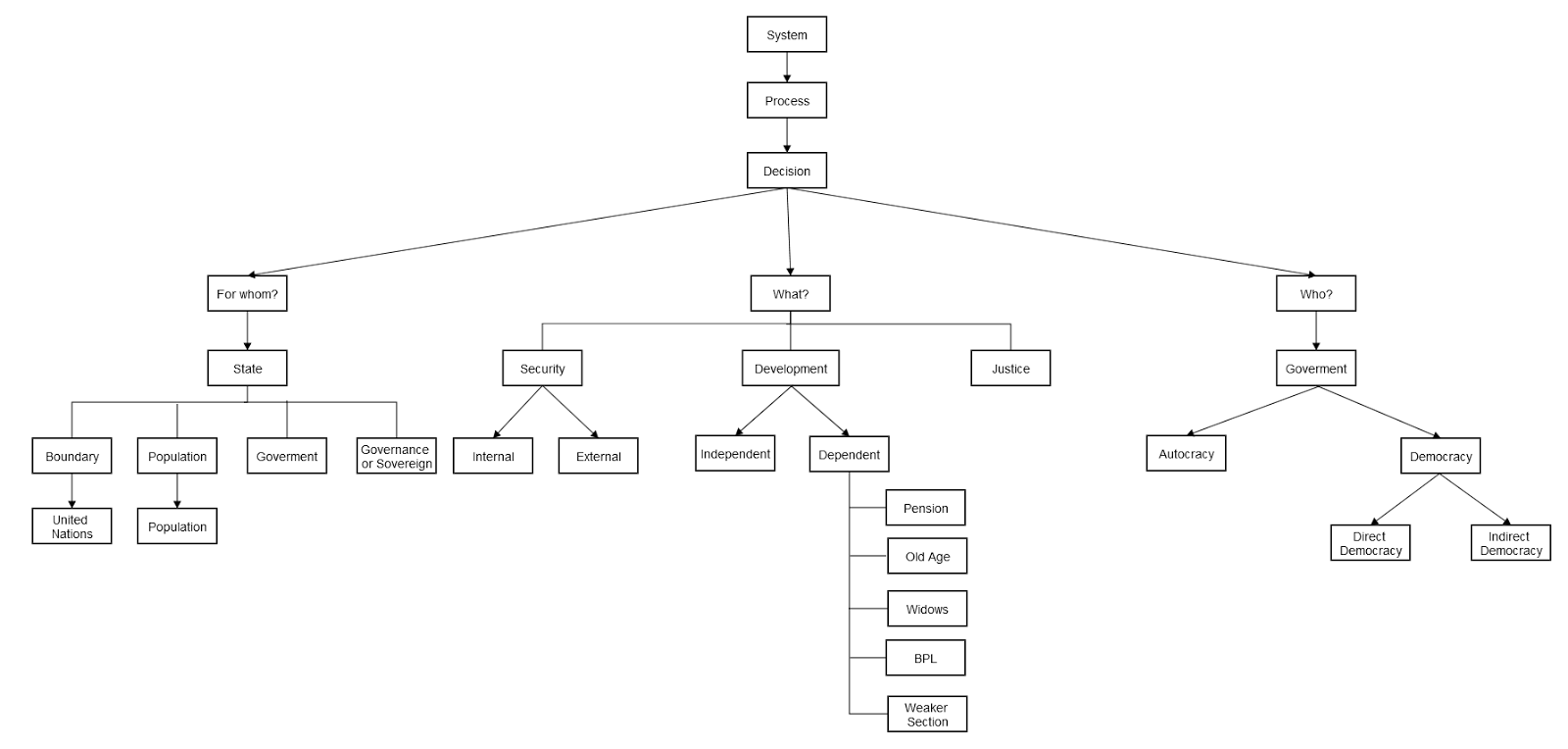To understand Polity we need to understand another term System. In our day to day discussion we came across many terms like Political system, Administrative system etc. So what is this System means?
Let me draw a diagram for you and then we will understand the system in context of Polity and its element through the diagram.

System is a process which takes decisions. Now question arises decisions are taken for whom? What decisions? And who takes decisions?
Decisions are always taken for State and not for one person nor for particular group of peoples. For example: In context of World, India is a State. Within India there are many states like Uttar Pradesh, Haryana, Assam, Kerala, Orissa etc.
How to define a State and its composition?
State contains four elements:
- Boundary: Every state has boundary that separates it from other states. For example India has definite boundary. Haryana has a boundary which separates it from other neighboring states of Himachal Pradesh, Punjab. At the international level, United Nations defines the boundaries of state.
- Population: The state has population which gives it people the right of citizenship. So state has citizen who have right to elect and get elected which non-citizens do not have in a state. For instance a citizen of US living in India is a non-citizen in India; he cannot vote or stand in election.
- Government: The government is the group of institutes who governs the state.
- Governance or Sovereign: Sovereignty is the freedom for decision making in particular state.
What are the decisions taken by Government?
The decisions taken by government are divided into three parts:
- Security: The first thing that government needs to provide to its citizen is Security. It is further divided into two categories:
- Internal: The internal security of the state is taken care of by Police.
- External: The external security is taken care of by Army, BSF etc. They protect state from external threats.
- Development: The government takes care of the development of the state and its citizen.
- Justice:
What are the types of government?
The government is of two types:
- Autocracy: In this type of government, only one person governs the state. All the powers are vested in the king.
- Democracy: There is suppression of power in Democracy. The definition of Democracy as given by Abraham Lincoln is by the people, of the people, for the people. Democracy is further divided into two parts: Direct Democracy and Indirect Democracy.
What is government?
Government is a group of institutes. It comprises of three main parts:
- Legislative: The function of Legislative is to make laws for the citizens of the state. For example MPs, MLAs etc.
- Executive: The function of Executive is to implement the laws as suggested by legislative. For example President, IAS, IPS officers etc.
- Judiciary: The function of Judiciary is to protect the law and punish the person who breaks the law.
These three together also known as three pillars of the government. Lately another pillar also came into picture also called fourth Pillar is Media. It considered one of the main Pillars.
Democracy
Democracy is the governance system. It is of two types:
- Presidential System: In Presidential system, there is separation of power. The legislative, executive and judiciary all works independently. For example: USA.
- Parliamentary System: In Parliamentary system, there is co-alliance of power. The legislative and executive depends on one another and Judiciary works independent. For example: India, UK.
On the basis of adopting the system of governance, the democracy can be divided into three systems:
- Federal system: The state participates with Centre in the distribution of power. The power is divided between Centre and state and local governments.
For example: USA.
- Unitary system: The system in which state does not participate with Centre in distribution of power. All governing power resides in a centralized government.
For example: UK.
- Quasi federal system: The system in which government work as Federal system and as a unitary system in an emergency. For example: India.Some of its features are:
a. Governor is appointed by President.
b. All India Services.
c. Single citizenship.
d. Emergency.
e. Independent judiciary
Go to SSC CGL Course
Tags: Polity, Indian Polity